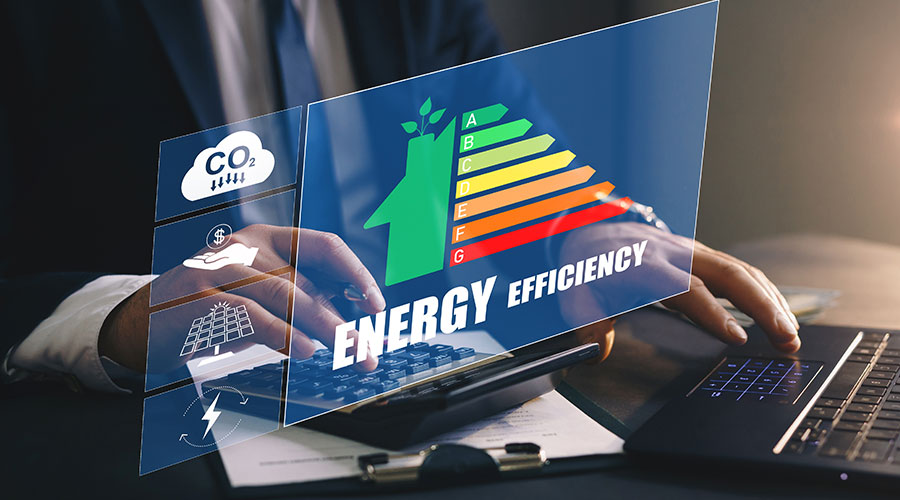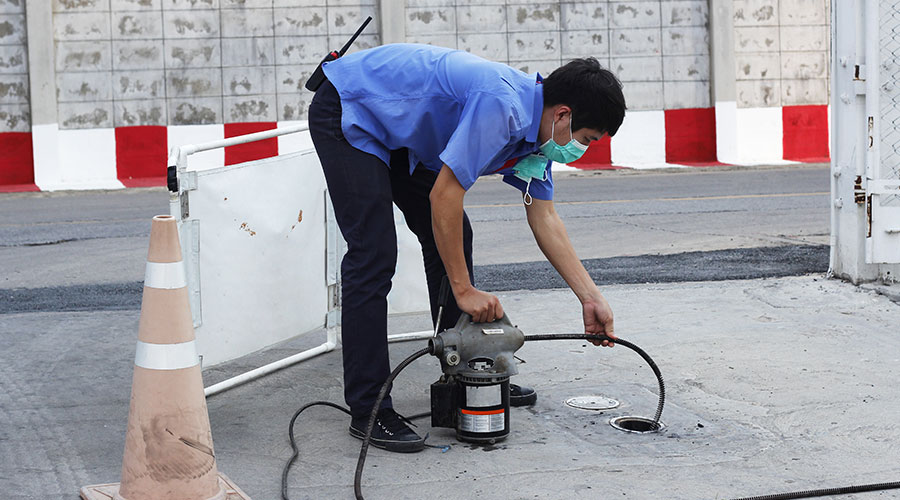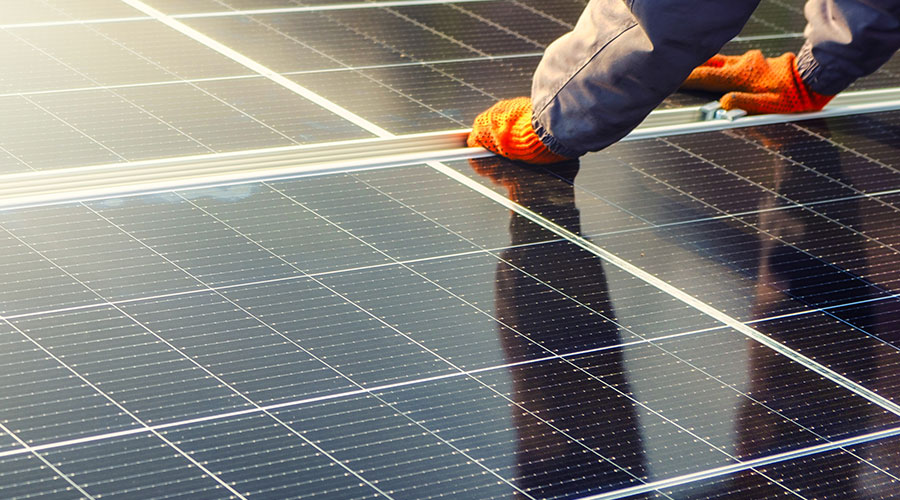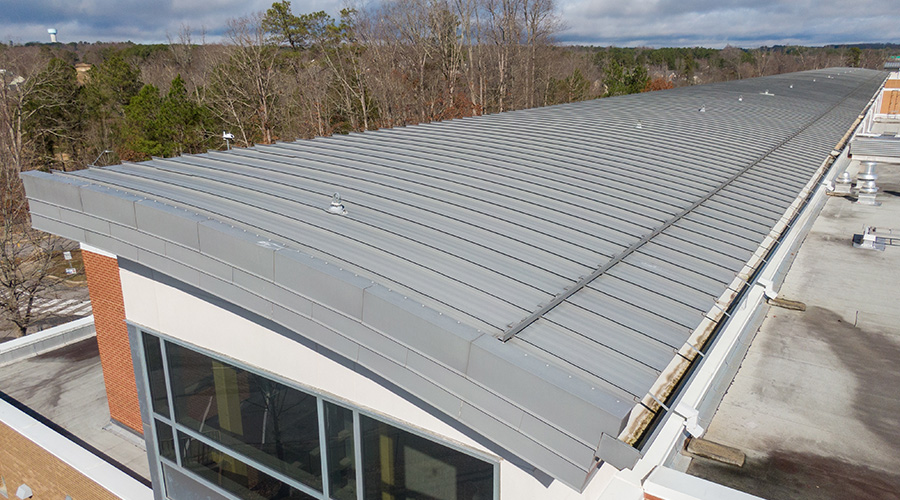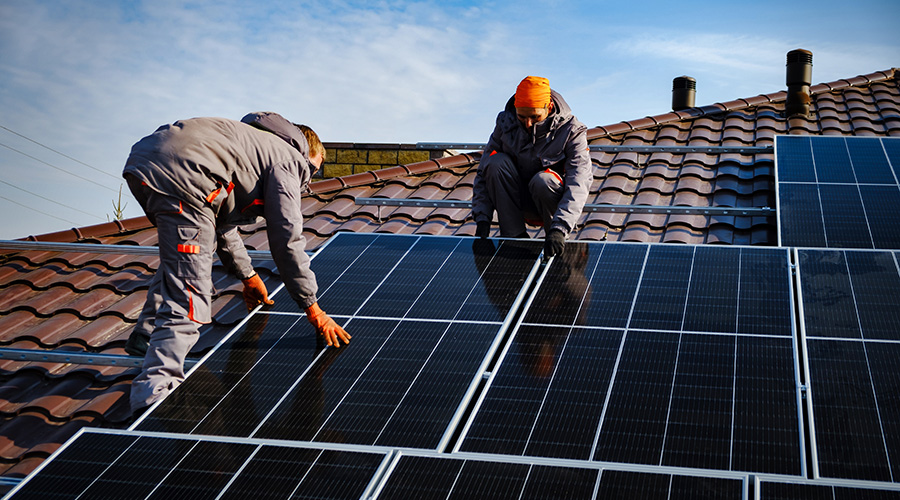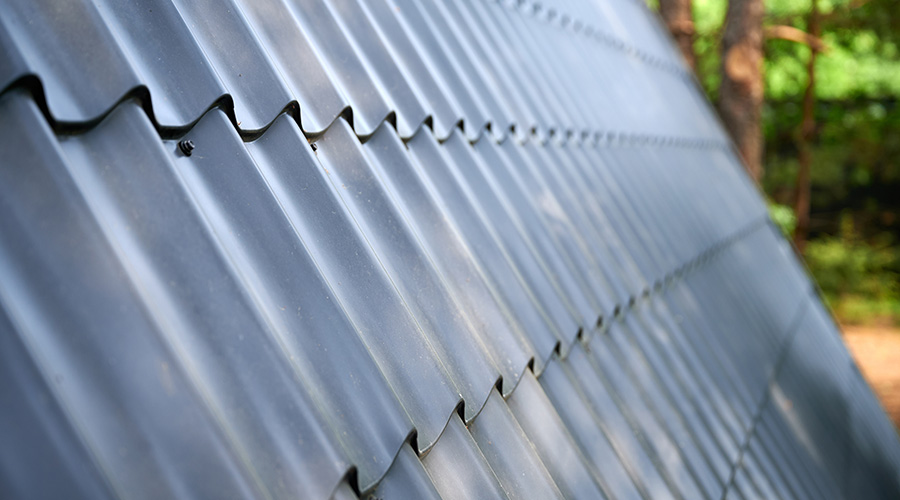Solar Panels Provide Roof Maintenance Challenges
As use of PV technology expands, managers must ensure roofing systems continue to operate efficiently.
Maintenance and engineering managers are increasingly involved in discussions about evolving solar technologies, particularly as they relate to integration with existing roofing systems and long-term maintenance needs for institutional and commercial facilities.
Roofing systems offer building owners and developers untapped development opportunities, which sometimes include solar power generation, says Chadwick Collins, technical director for the Single Ply Roofing Industry (SPRI).
“While some roofs might have HVAC units or utility lines, there’s often plenty of unused space that hasn’t been fully explored or effectively leveraged,” Collins says. “From a single-ply roofing point of view, the main concern (surrounding solar installations) usually revolves around the weather-tightness of all the penetrations made during installation, making sure the roof’s primary function — keeping the weather outside — remains intact.”
When evaluating a roof for solar use, Collins says it is critical to factor in live, dead and wind load limits, as well as snow and seismic loads where applicable.
“A majority of low-slope commercial roof systems aren’t designed to support the load or stresses of a solar installation,” he says. “The photovoltaic systems should have a way to transfer the load directly into the building’s main structure without putting any of that load onto the roofing system itself.”
The U.S. Department of Energy’s Better Buildings Alliance says maintenance and engineering teams first should implement efficiency upgrades throughout the building.
“This should be done through other energy efficiency measures so that the maximum potential of the solar PV system can be realized and unnecessary losses can be avoided,” according to the alliance’s On-Site Commercial Solar PV Decision Guide. “By reducing the demand of the building first with least-cost measures, the size and cost of the solar PV system can be reduced.”
Adds SPRI’s Collins, “There are numerous opportunities for energy efficiency improvements within every facility, including the potential capacity for energy generation and the various financial incentives offered by local, state, and federal governments, as well as utility companies.”
Maintenance matters
Maximizing solar system performance depends on regular maintenance.
“The maintenance expected with roof-mounted solar systems includes keeping panels clean and clear of debris or obstructions, as well as caring for the power conduction components to ensure they are in good working order,” says Collins, who says managers need to treat solar just like any other utility power.
He says managers should request clear maintenance instructions, including details on how often and what qualifications are needed for maintaining the solar panels from the equipment manufacturer.
“Ideally, the same team that handles regular roof check-ups could also take care of the solar panels,” Collins says. “We also recommend a seasonal maintenance plan for the roof to keep debris away from drainage and to check for any weather-related damage.”
Managers should use a preventive maintenance schedule to conduct a yearly visual inspection for weather damage or wear of their solar panels, racking and wiring for damage, soiling or signs of animal activity, says Evelyn M. Butler, vice president of technical services at Solar Energy Industries Association.
“Inspection frequency depends on the component and system. For example, assessment of the array mounting system should be done quarterly, and cabling and electrical boxes semi-annually,” she says. “Inspection and testing of the grounding system should be performed annually, and inspection of the inverter should be done monthly, etc.”
Performance monitoring
Managers can track solar system performance using monitoring software that compares real-time data against expected output, accounting for weather conditions and environmental factors.
“Some commercial solar roofing software may automatically adjust for real-time weather data, ruling out any normal deviations in power output,” Butler says. “Next, maintenance engineers should review inverter error codes, such as ground faults, as well as breakers or fuses. Then perform a visual inspection for excessive soiling, hotspots — using an IR camera — or physical issues, such as damaged wiring or loose connections. Finally, conduct physical testing of voltage and current for the impacted array or string.”
Rooftop solar arrays tend to require less upkeep than ground-mounted systems.
“Performance is monitored via internet or RF-connected tools and can determine whether a performance issue requires in-person maintenance,” Butler says. “Based upon the complexity of the system, and if the in-house maintenance team has solar and energy storage experience, the appropriate service schedule can be determined, including the costs.”
Front-line technicians working with rooftop solar arrays should be thoroughly trained in safety standards, especially those relating to fall protection and electrical work.
One common cause of solar system malfunctions is incomplete electrical connections combined with poor cable management, both of which can create safety hazards and lead to system failures.
Other installation shortcomings include improperly torqued connections, failure to flash rooftop attachments correctly and not accounting for the differences between indoor and outdoor temperatures, which can cause condensation and corrosion of electrical components.
The durability of a photovoltaic system depends mainly on its components and their exposure to the elements.
“Photovoltaic panels typically last 25 to 30 years or more, often still producing around 80 percent of their original rated output beyond the end of that period,” Butler says. “String inverters usually last 10 to 15 years, while microinverters can exceed 25 years. Racking systems, especially those made from aluminum or stainless steel, generally last over 25 years. Wiring can last between 20 and 30 years, depending on its exposure to the elements, while monitoring equipment typically lasts around 10 to 15 years.”
Solar energy remains an increasingly essential option for commercial buildings. With incentives still in place for non-residential systems and new standards emerging, managers have a growing role in ensuring that photovoltaic systems are deployed, maintained and monitored safely and efficiently.
Joel Williams is a freelance writer based in Frankfort, Illinois.
Related Topics:






